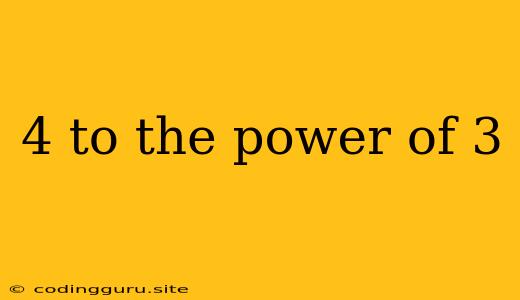What is 4 to the power of 3?
In mathematics, "4 to the power of 3" is a way of expressing a repeated multiplication. It means multiplying the base number (4) by itself a certain number of times (3). The notation for this is 4^3.
Understanding Exponents
Exponents are a shorthand way to write repeated multiplication. They consist of two parts:
- Base: The number being multiplied by itself (in our case, 4)
- Exponent: The number of times the base is multiplied by itself (in our case, 3)
So, 4^3 is the same as: 4 x 4 x 4
Calculating 4 to the Power of 3
To calculate 4 to the power of 3:
- Multiply 4 by itself twice: 4 x 4 = 16
- Multiply the result (16) by 4 again: 16 x 4 = 64
Therefore, 4 to the power of 3 (4^3) equals 64.
Other Examples
Here are some other examples of exponents:
- 2^4: 2 x 2 x 2 x 2 = 16
- 5^2: 5 x 5 = 25
- 10^3: 10 x 10 x 10 = 1000
Why are Exponents Important?
Exponents are crucial in mathematics and science for a variety of reasons:
- Simplifying expressions: They provide a concise way to represent repeated multiplication.
- Solving equations: They are often used in algebraic equations and formulas.
- Scientific notation: They help express very large or very small numbers in a compact way.
- Computer programming: They are used extensively in computer programming to perform calculations and manipulate data.
Conclusion
Understanding exponents is essential for anyone working with math or science. 4 to the power of 3 is just one simple example of how exponents work, but they are a fundamental concept with far-reaching applications.
